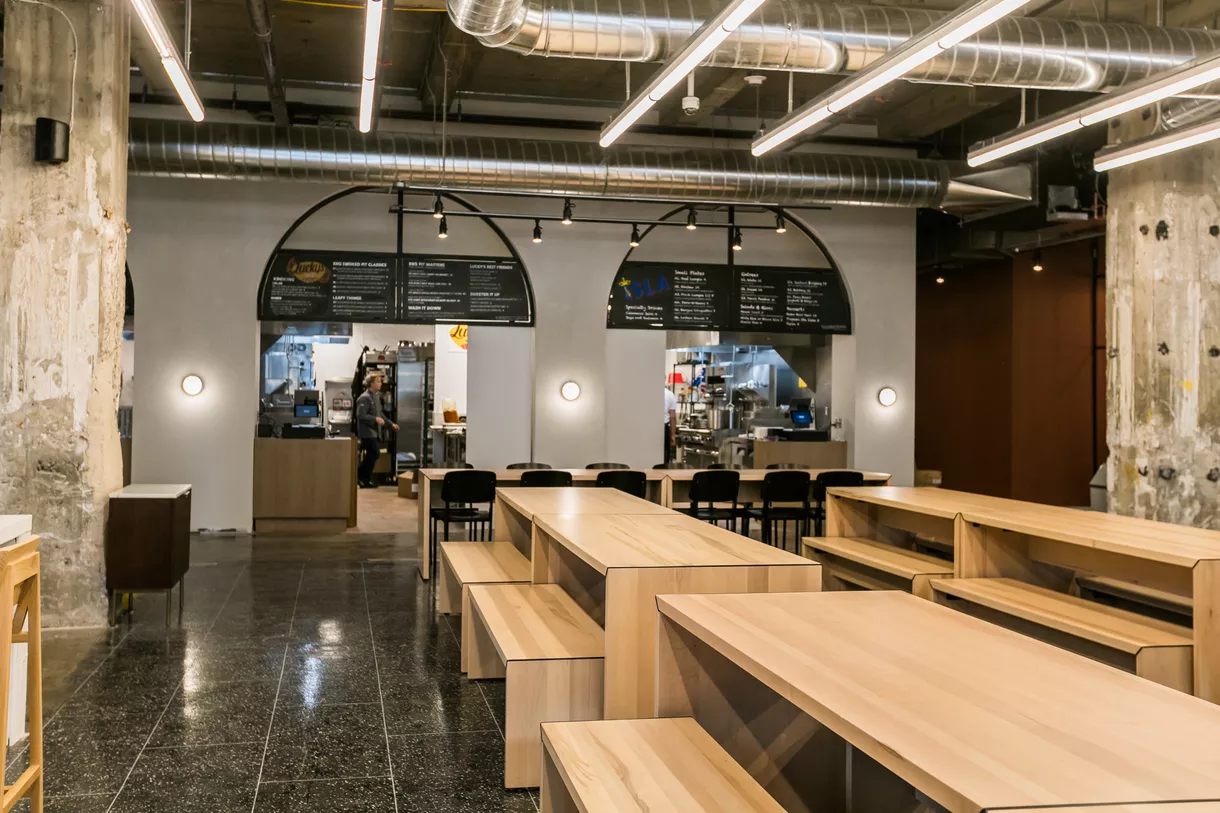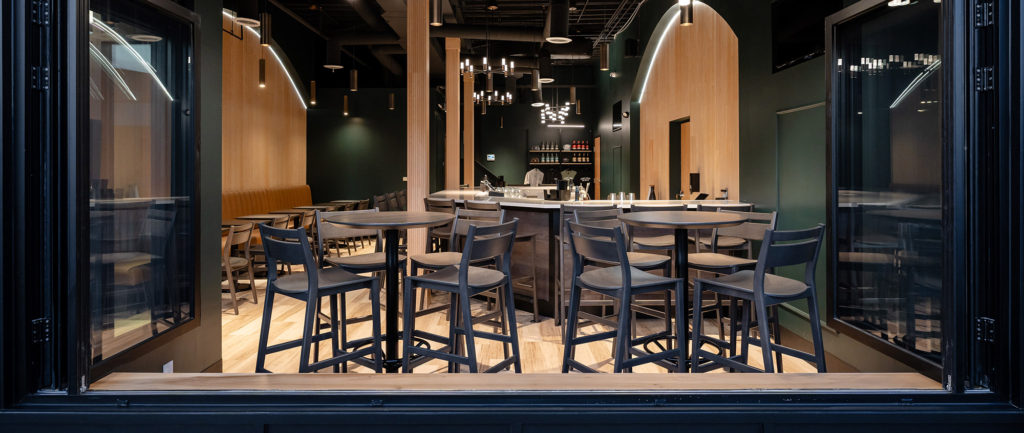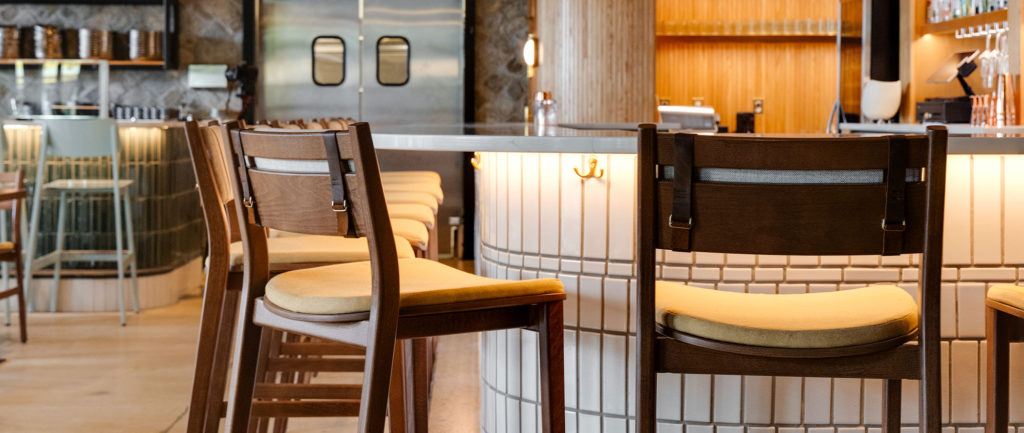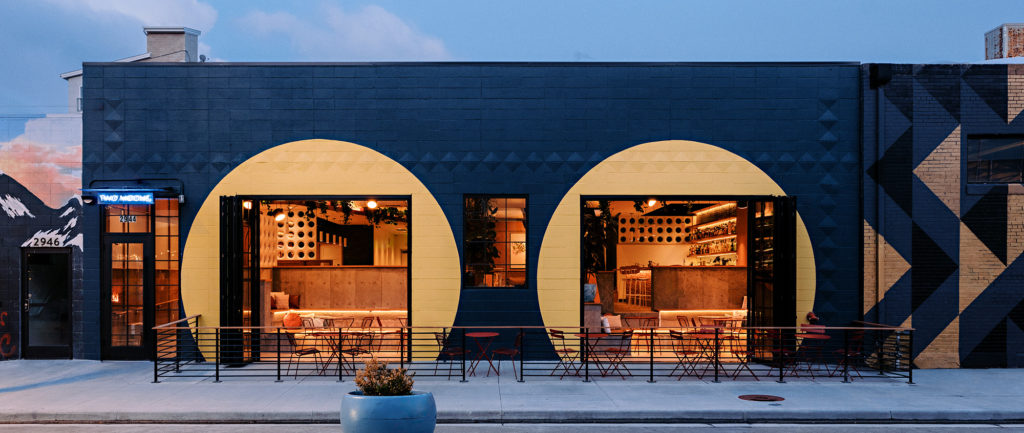How To Use A Communal Table In Your Restaurant
One way restaurants can foster a more social experience is through the use of communal tables.
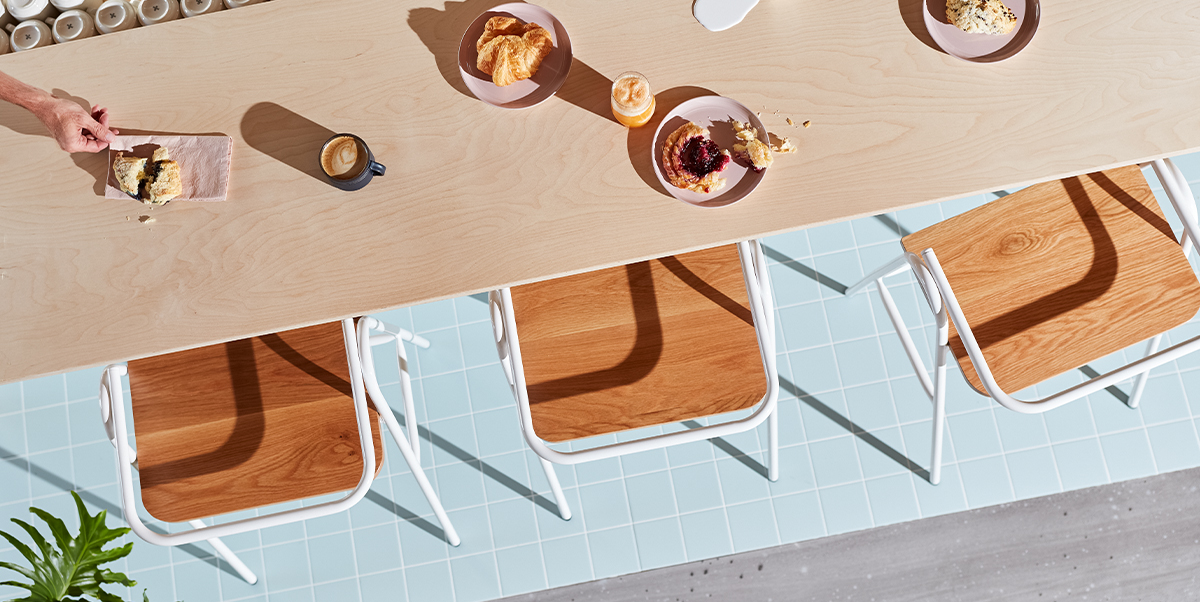
For almost a decade we’ve seen restaurants and chains invest heavily in their built environments, catering to a younger demographic and competing for sales (and loyalty) in a highly competitive marketplace. This year we predicted that as consumers, we’d see more non-traditional seating arrangements in restaurants across all categories of food spaces, think communal tables, varied heights, and intimate lounge settings, all in an effort to attract a more diverse audience.
Reports show that consumers are demanding more variation than ever, and more importantly, they want social dining experiences. Which is one reason why modern day food halls like Workshop in Charleston have been popping up all over the country in recent years. One way restaurants can foster a more social experience is through the use of communal tables. While communal tables have been on everyone’s radar since early 2012 as an emerging QSR/FSR trend, it’s momentum doesn’t appear to be slowing down.
Love them, or hate them, communal dining tables are the easiest, most cost effective way for restaurants to increase revenue and deliver on their customer’s appetite for varied seating choices. According to article in Restaurant Development + Design magazine which quotes Darren Tristano, executive vice president at Technomic, “Communal tables help meet the growing need for restaurants to provide platforms that fit an array of consumer occasion sets. They’re also particularly appeal to millennials, who look for restaurant destinations that can accommodate their design to socialize, graze, and linger.”
When used properly, communal tables can transform a restaurant’s atmosphere and create an unforgettable experience. Not only that, but communal tables help restaurants increase revenue by allowing them to maximize space and fit more people into a smaller footprint.
While some diners have been hesitant to embrace the trend, thanks to the increasing influence of Gen Z and the Millennials, they’re here to stay. Here are four things to consider when designing restaurant spaces with communal tables:
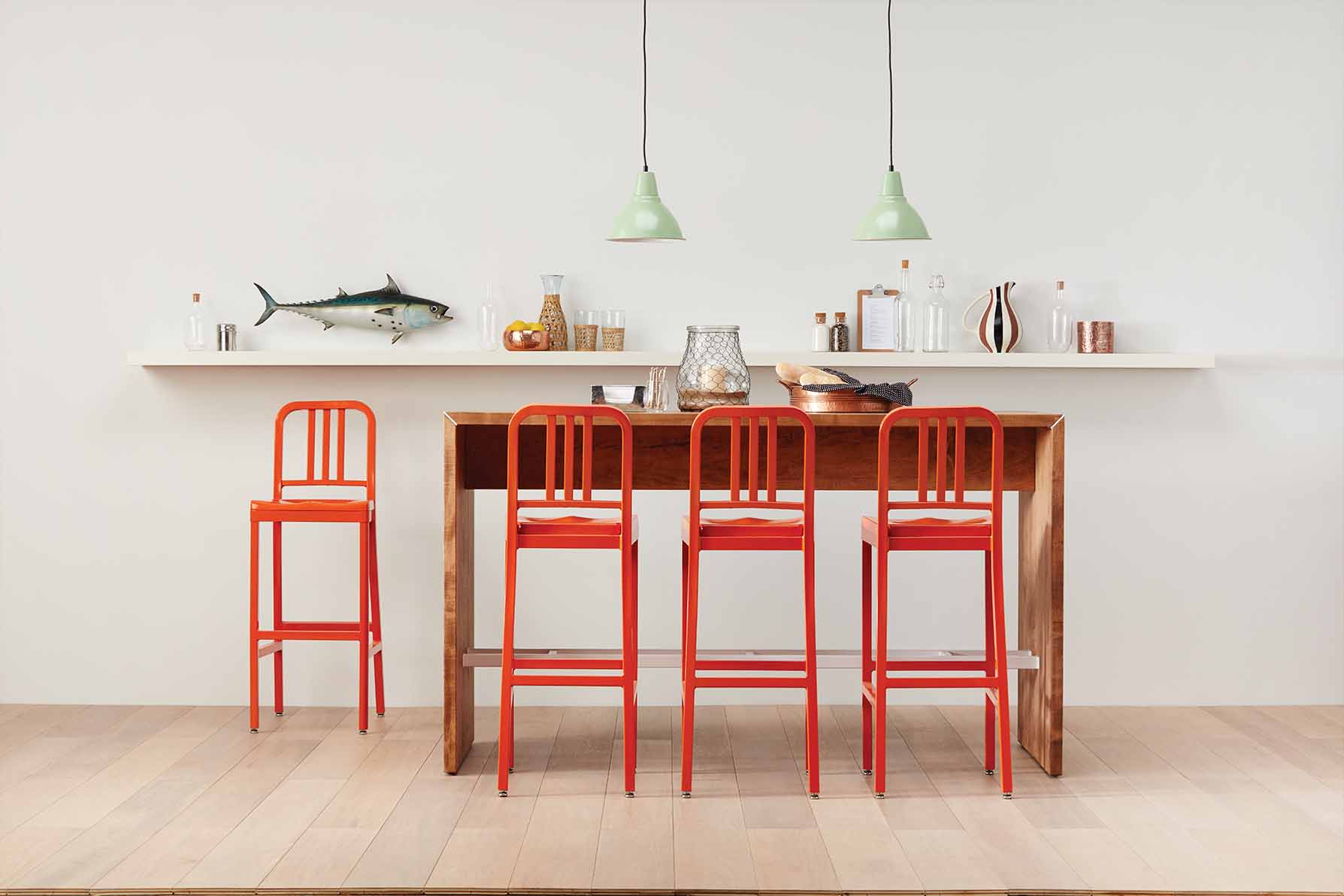
1. Is your target demographic hungry for a social exchange?
If you’re catering to a younger, more casual audience, than communal tables will most likely be successful in your space. However, it’s imperative that the wait staff is well trained to encourage social interactions amongst guests and know how to navigate the sometimes complex logistics of communal seating.
2. How much time your customers will spend eating an average meal?
Fast casual and quick serve restaurants are ideal places to use communal tables. These restaurants can really capitalize on their speedy table turnover and generally more laid-back atmosphere. For fine dining applications though, customers expect a heightened level of intimacy and comfort that “first come, first serve” communal seating doesn’t always provide. This is why we suggest using them mainly for large party applications or in private dining spaces.
3. Will customers bring their own technology into your restaurants to work?
In cafe type settings, integrating power ports for charging laptops suggests to customers that these tables are “work and tech friendly.” Pairing these tech enabled tables with more comfortable seating (upholstered chairs/barstools) will create a really enjoyable experience for customers, while also leaving the two-tops open for high turnover customers.
4. How big of a table do you need?
If you’re using the communal table like an extension of your bar for customers to have a drink while they wait to be seated, then stick with a narrower table (<30” wide) but if you’re expecting diners to eat a full meal, use a table that is no less than 30” wide. The biggest complaint people have about communal seating is how close you have to sit to strangers, so deliver the best customer experience by leaving a little elbow room.
Have you designed a restaurant space with communal tables? We’d love to hear some of your expert tips and tricks for designing with and designing around these large scale furniture pieces.
